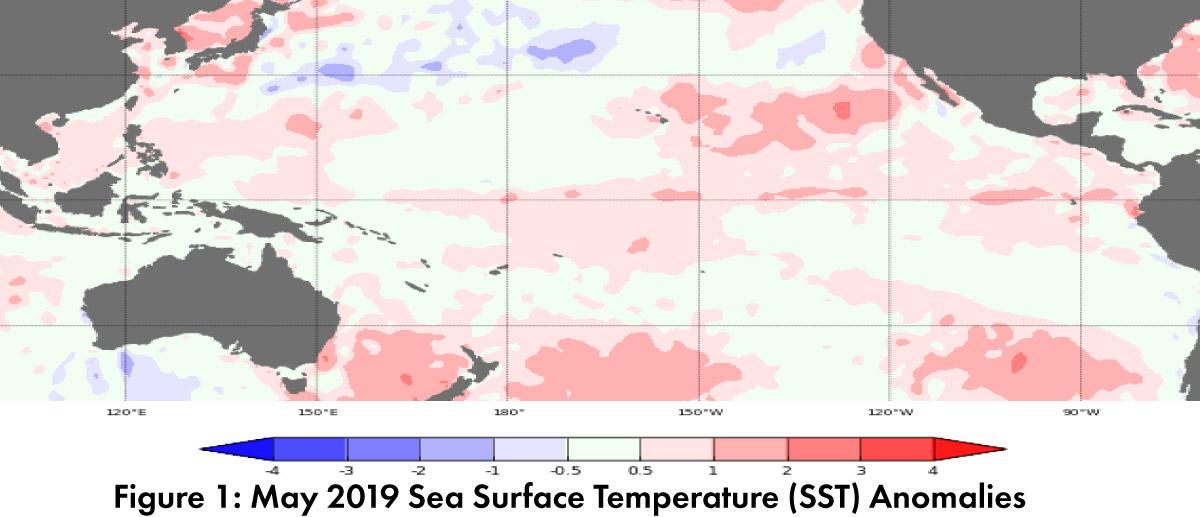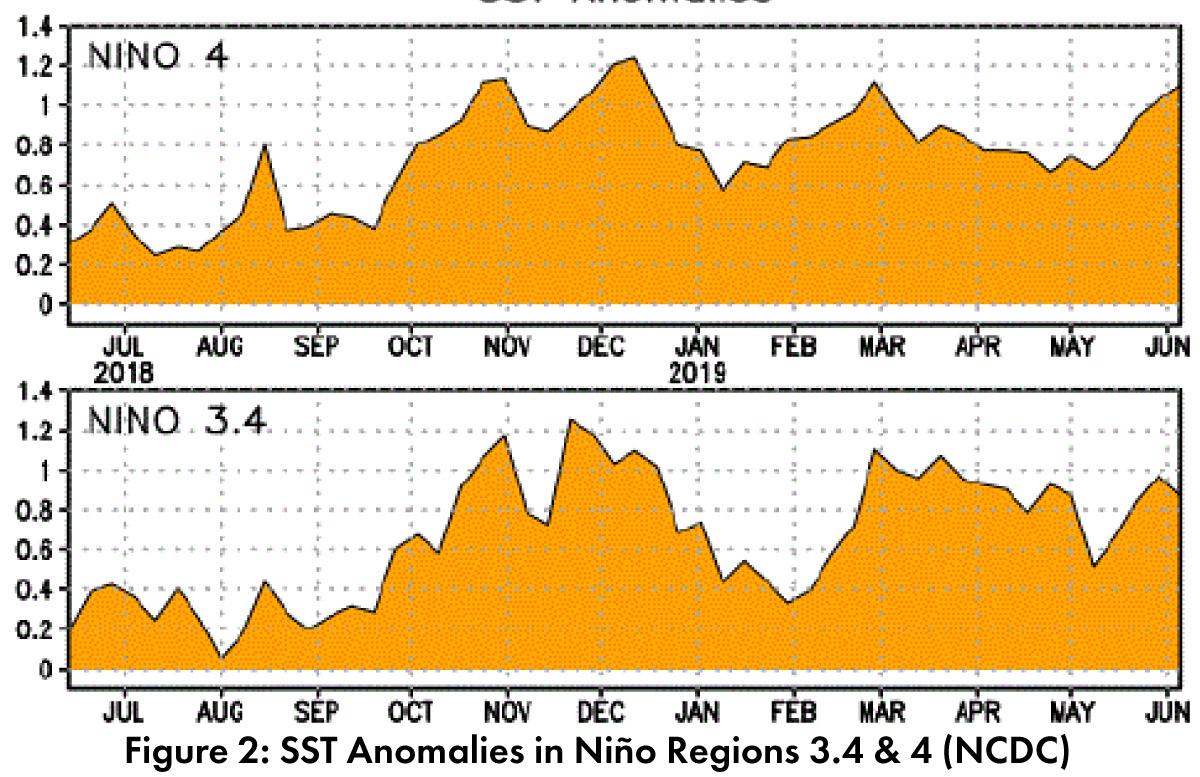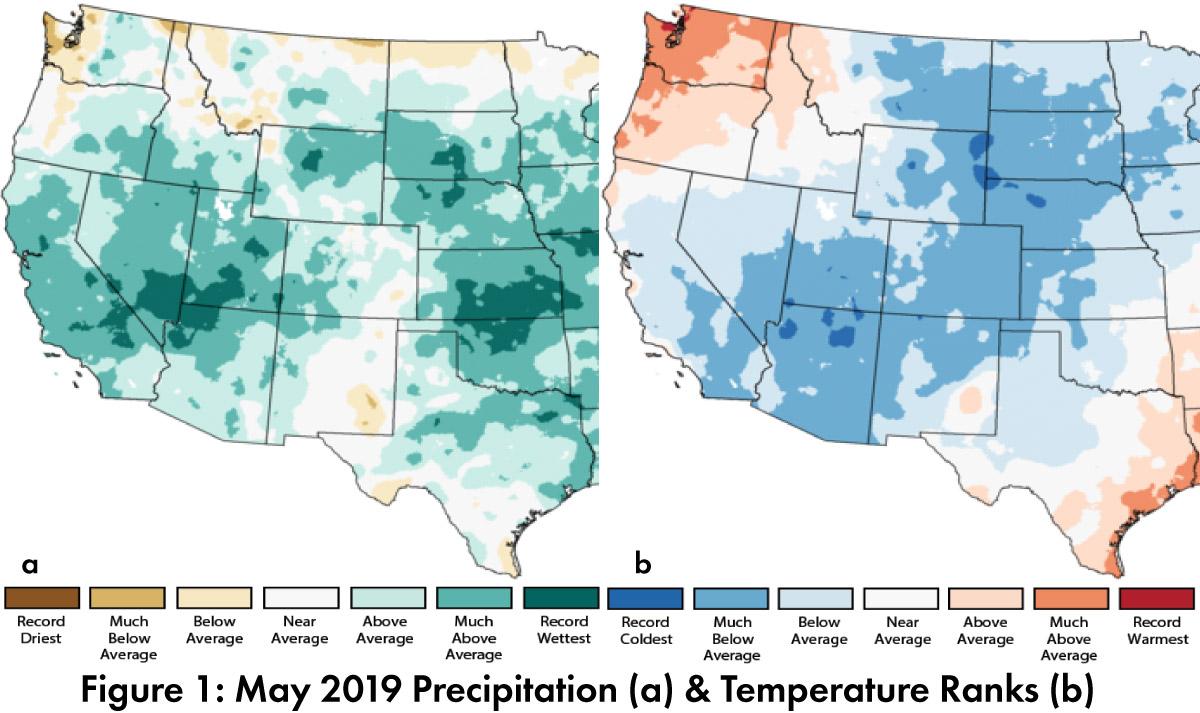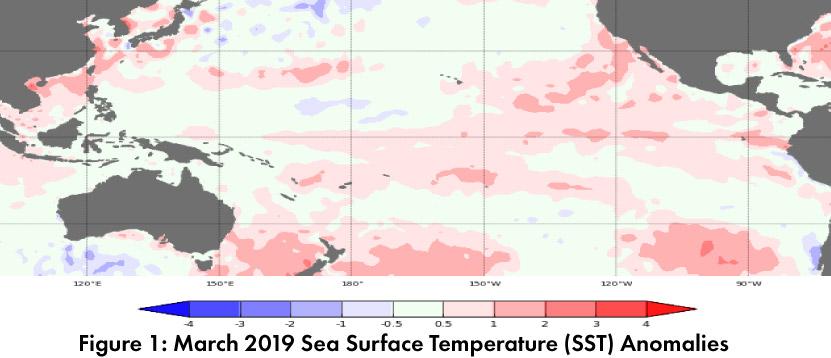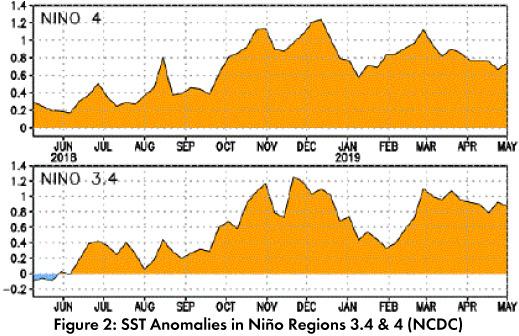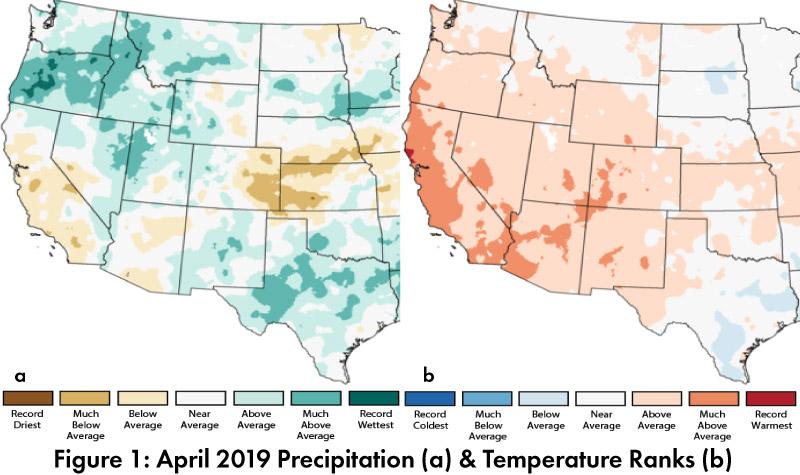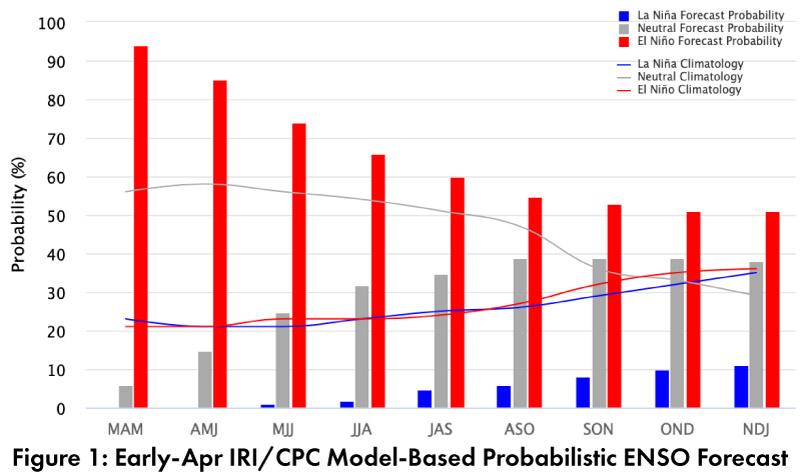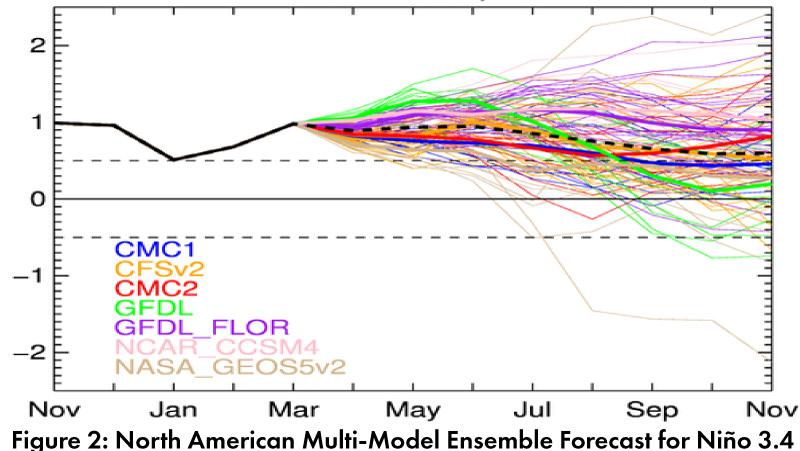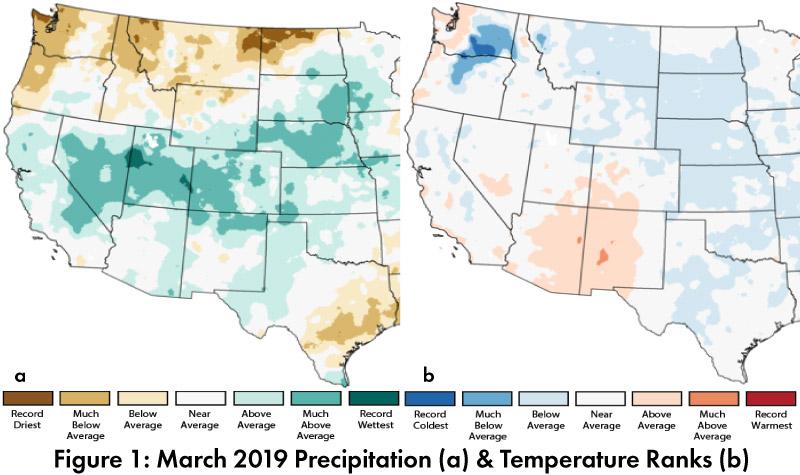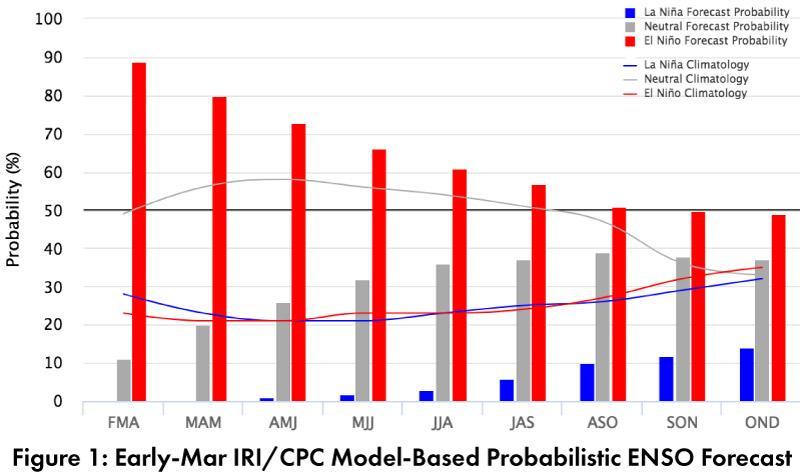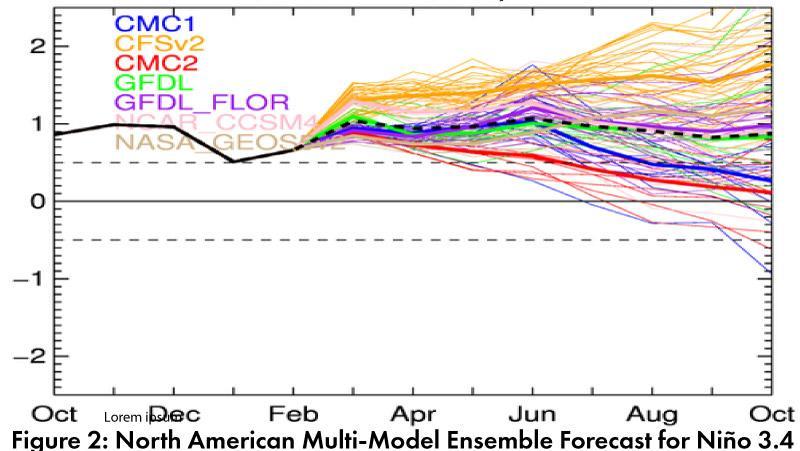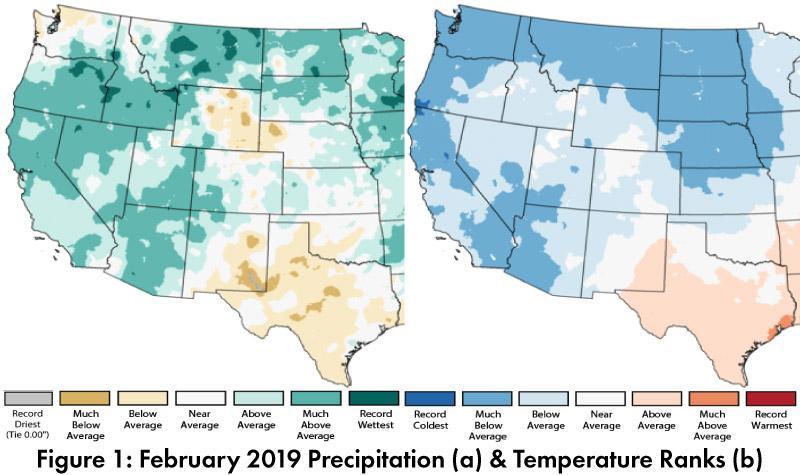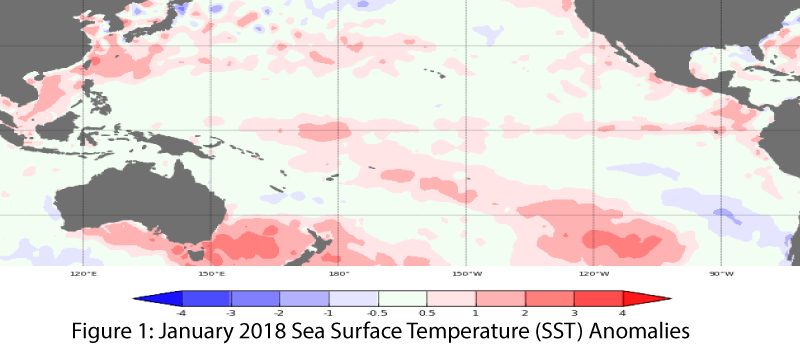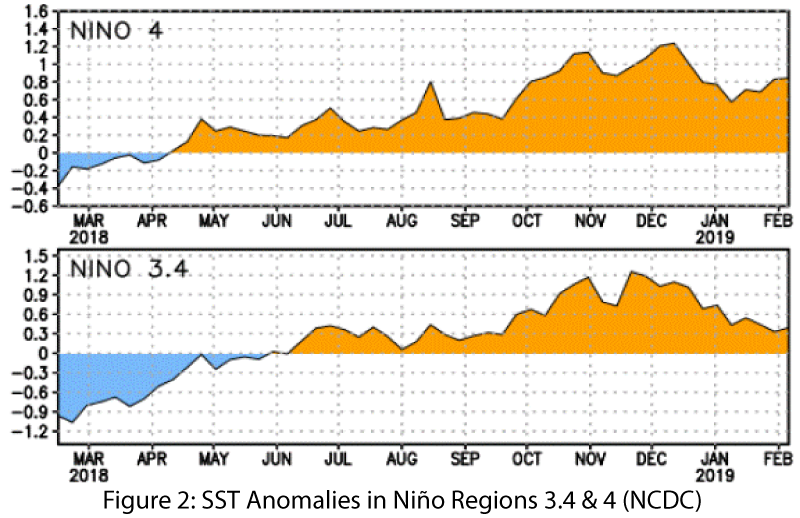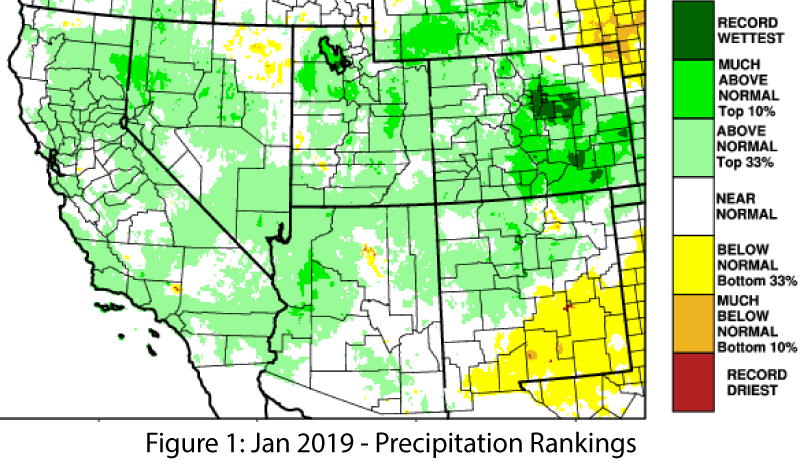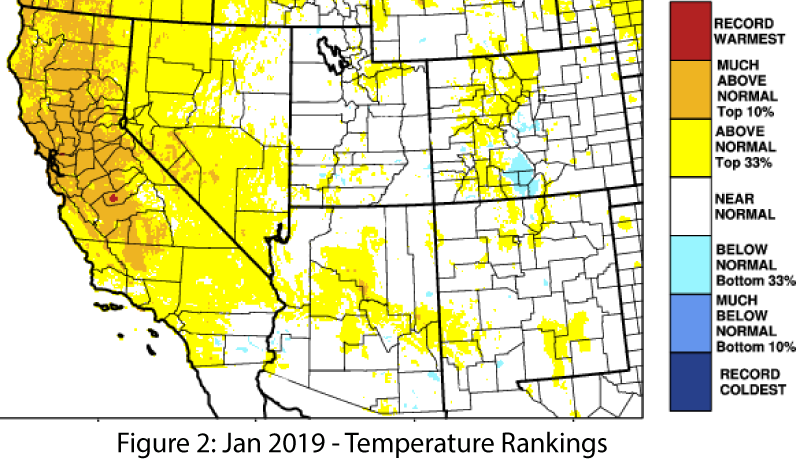Southwest Climate Outlook - El Niño Tracker - June 2019
Forecast Roundup: Seasonal outlooks are based on the persistence of sea surface temperature (SST) anomalies consistent with a weak El Niño event (Figs. 1-2), along with the presence of other atmospheric and oceanic indicators (convective anomalies, sub-surface temperatures). On June 10, the Japanese Meteorological Agency (JMA) noted persistent SST anomalies along with atmospheric and sub-surface indicators of El Niño, and called for a 70-percent chance of these conditions continuing into summer, and a 60-percent chance to last into fall. On June 11, the Australian Bureau of Meteorology maintained their ENSO Outlook at watch status, calling for a 50-percent chance of an El Niño event in 2019. (read more)

